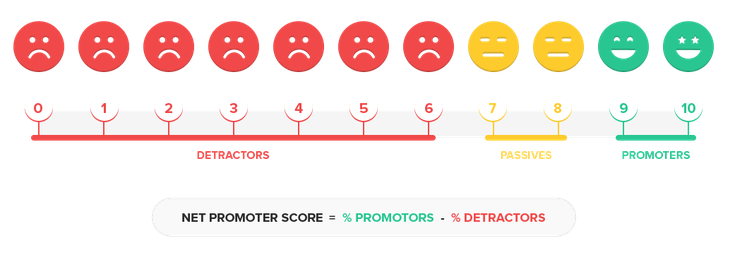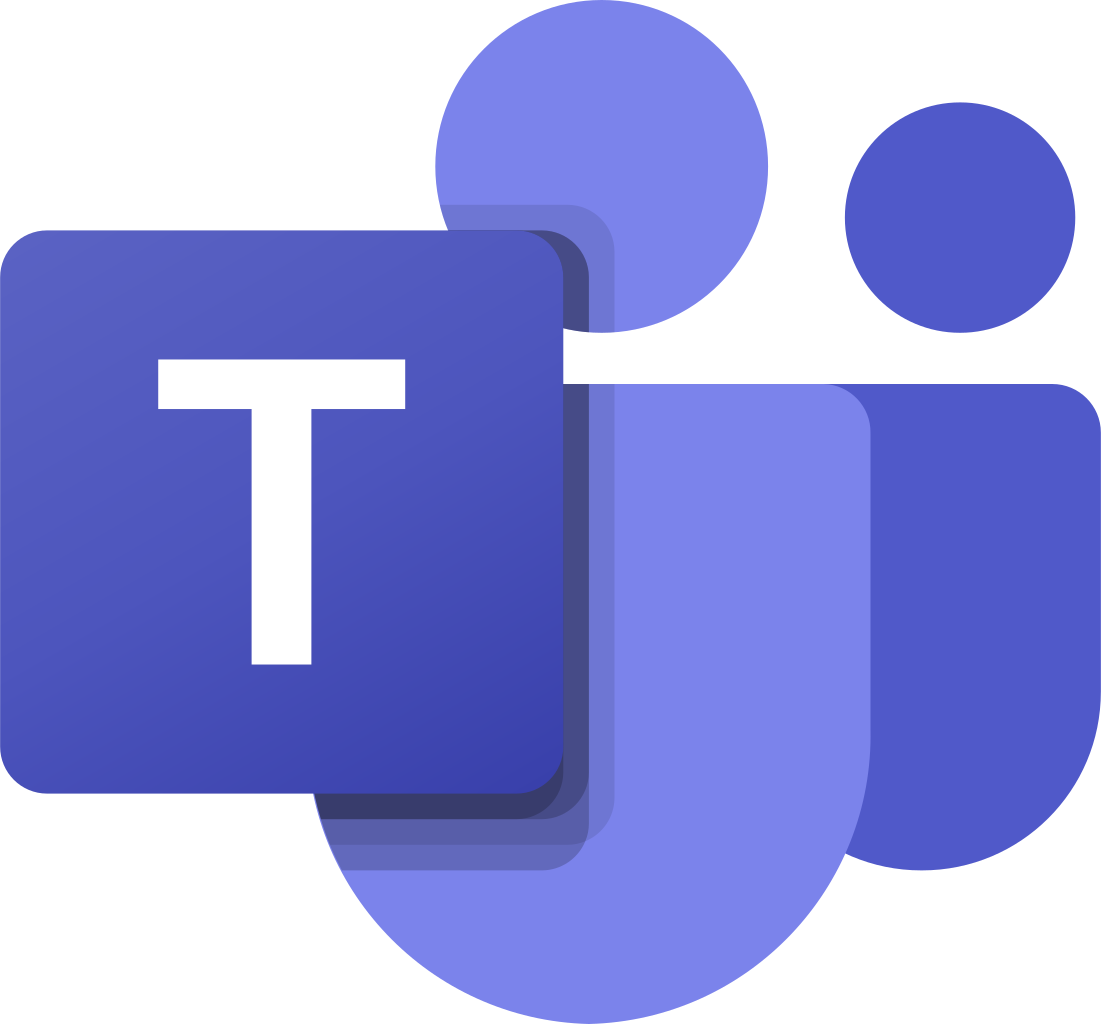Imagine losing a customer not because of your product, but because a customer had a bad experience they just had to share. This happens more often than you think. According to Bain & Company, unhappy customers are responsible for more than 80% of negative word-of-mouth. This can be a silent killer for your growth!
Fortunately, NPS surveys offer a powerful way to uncover these hidden frustrations. Many companies are leveraging NPS surveys to identify areas for improvement, get a comprehensive understanding of customer loyalty, and increase their Net Promoter Score to a staggering 85+.
Companies with a high NPS (above 70) tend to grow at more than twice the rate of their competitors in the same industry. Now imagine if you have leveraged NPS surveys and increased your NPS score to 85, then you would outpace your competitor that has an NPS below 70 and grows at a rate of 10% annually by approximately 25%. If the revenue in the first year for both companies is 100 million, then by the 5th year, your company would make a profit difference of 144.13 million.
Just think about the millions you could add to your bottom line by using NPS surveys!
By leveraging NPS surveys, you can get a direct line to customer sentiment and identify hidden frustrations before they snowball into lost business.
In this blog, we'll delve into everything you need to know about NPS surveys, including their types, significance, creation process, implementation strategies, key touchpoints for utilization, and how to act on NPS results. Let's get started!
TL;DR
- NPS surveys measure customer loyalty and satisfaction based on the likelihood of recommending a product/service to others. They can be of two types: Relationship NPS surveys (conducted periodically) and Transactional NPS surveys (triggered by interactions).
- NPS is calculated by subtracting the percentage of detractors from the percentage of promoters, resulting in a score ranging from -100 to 100.
- Implementing NPS surveys helps you analyze customer sentiment, identify improvement areas, predict business growth, enhance retention & loyalty, and benchmark against competitors.
- You can use NPS surveys at various touchpoints in the customer journey, such as after a purchase, a customer support interaction, or other key interactions across industries.
- Zonka Feedback is a powerful NPS software that helps you engage with customers, measure their loyalty, and identify ways to prevent churn through its NPS surveys. You can sign up for a 14-day free trial or schedule a demo to see how it turns out for your business!
Measure Customer Loyalty with NPS
Use the NPS survey to measure customer loyalty and close the feedback loop with Zonka Feedback.

What are NPS Surveys?
Data is king in today's business world, but when it comes to customer loyalty, sometimes the most valuable insights come in a simple question. Think about a company like Netflix. They don't just track how many times you watch a movie, they want to know if you're truly a raving fan. Here's where NPS, or Net Promoter Score, steps in.
NPS surveys, or Net Promoter Score surveys, are a way for companies to gauge how likely their customers are to recommend their products or services to others. It seeks a rating from customers on a 0 to 10 rating scale, with 0 being least likely and 10 being most likely.
The answer to NPS survey question allows Netflix (or any company) to categorize customers into 3 groups:
- Promoters (Score 9-10): These are your champions! They're so happy with the service they'd tell everyone they know. According to research by Bain & Company, promoters can drive up to 2.5x more revenue than other customers. For Netflix, that translates to more subscriptions and a loyal fanbase constantly singing their praises.
- Passives (Score 7-8): These people are satisfied, but not necessarily hooked. They might keep using the service, but they're also open to exploring other options. A study by Temkin Group reveals passives are more likely to churn compared to promoters. This would be a wake-up call for Netflix to understand what might keep these customers from becoming true fans.
- Detractors (Score 0-6): These are the customers who had a less-than-stellar experience. They might leave negative reviews or bad-mouth the service to others. A study by Frederick Reichheld, the creator of NPS, suggests detractors can cost your business as much as 10% in revenue. For Netflix, that translates to lost subscribers and potential damage to their brand reputation.
NPS scores not only tell you how satisfied your customers are, but they can also help you predict future revenue growth. Why? Because happy customers are more likely to stick around and, guess what, spend more money with you!
Studies show that a whopping 65% of companies are able to successfully upsell or cross-sell to existing happy customers, compared to a measly 12% success rate with new ones. NPS surveys help you identify those promoters, the enthusiastic customers who will champion your brand and help you address any concerns from less happy customers before they spread the word.
Net Promoter Score Survey Template
Here is an NPS survey template that you can use to create your NPS survey and measure customer loyalty. You can use this template as it is or modify it as per your survey requirements.
Types of NPS Surveys
Net Promoter Score surveys come in various forms, each tailored to capture specific aspects of customer experience. Here are the two primary types of NPS surveys:
1. Transactional NPS Survey
Transactional NPS surveys are more targeted feedback surveys and are triggered by specific interactions or transactions between the customer and the business. These surveys aim to capture feedback immediately after a customer engages with your product or service.
The question is often tailored to the recent transaction, such as, "Based on your recent experience, how likely are you to recommend our service?"

2. Relationship NPS Survey
Relationship NPS surveys are designed to gauge the overall satisfaction and loyalty of customers over an extended period. The difference between transactional NPS and relationship NPS is that relation NPS surveys provide a holistic view of the customer relationship, offering insights into the long-term perception of your brand.
These surveys typically ask the standard NPS survey question, "How likely is it that you would recommend our company to a friend or colleague?" Combining transactional and relationship NPS surveys provides a comprehensive view of the customer journey. You can use transactional NPS to pinpoint areas for improvement and relationship NPS to track the effectiveness of your efforts over time.
Combining transactional and relationship NPS surveys provides a comprehensive view of the customer journey. You can use transactional NPS to pinpoint areas for improvement and relationship NPS to track the effectiveness of your efforts over time.
| Feature | Transactional NPS | Relationship NPS |
| Timing | Triggered by specific interactions (purchase, support call, etc.) | Conducted periodically (quarterly, annually) |
| Focus | Particular experience | Overall experience |
| Insights | Real-time feedback on specific touchpoints | Broad understanding of customer sentiment trends |
| Use Case | Post-purchase in e-Commerce, hotel check-out, after customer support call, etc. | Overall product feedback, subscription services, patient satisfaction, etc. |
Why You Should Use NPS Surveys?
The beauty of the Net Promoter Score surveys lies in its simplicity and effectiveness. By understanding and leveraging the insights from Net Promoter Score methodology, you can make improvements and increase retention rates. Let us look at why you must implement NPS surveys for your business.
- To Get Clear Customer Sentiment Analysis: NPS surveys provide a straightforward measure of customer sentiment. The division into promoters, passives, and detractors offers a clear picture of where your business stands in the eyes of your customers. This clear picture lets you focus on keeping your promoters happy and turning those passives into brand champions.
- To Identify Areas for Improvement: NPS surveys aren't just about patting yourself on the back. The real magic happens with the "why" behind the scores. Did a promoter love your lightning-fast customer service? Did a detractor have a nightmarish experience with your return policy? This feedback exposes areas that need improvement, allowing you to fix them before they cause a customer revolt.
- To Predict Future Growth: NPS isn't just a snapshot – it's a trend watcher. A rising NPS score indicates happy customers who are more likely to stick around and spend more. A dip? Time to sound the alarms and address any brewing issues before they explode. Think of it this way: NPS is your early warning system for customer churn, allowing you to take proactive steps to keep your business healthy and thriving.
- To Retain Customers & Increase Brand Loyalty: Loyal customers are your best salespeople. By focusing on recommendations, NPS helps you identify your promoters and turn them into brand advocates. Imagine a legion of happy customers singing your praises and bringing in new business – that's what NPS surveys do!
- To Benchmark Against Competitors: If you are feeling lost in a sea of similar businesses, NPS acts as a handy benchmark. You can compare your score to industry standards and see where you stand. This lets you set realistic goals and identify areas where you can outshine your competitors.
How to Create the NPS Survey?
Creating NPS surveys is remarkably straightforward, requiring minimal effort. Once you have outlined your survey goals—whether you want to gauge overall customer experience, identify key touchpoints, or evaluate the success of recent initiatives—you can then choose the type of NPS survey that best suits your current needs and long-term strategies.
When you are clear on that front, all you need is two key questions that can effectively gauge customer loyalty and satisfaction. These questions include:
a. NPS Survey Question
The Net Promoter Score question is a rating question and forms the core of the survey, asking respondents to rate, on a scale of 0 to 10, how likely they are to recommend your product or service to others. This single, direct question provides a clear measure of customer satisfaction and loyalty.
- Use the standard wording: "How likely are you to recommend [company/product/service] to a friend or colleague?"
- Offer a response scale typically ranging from 0 (not at all likely) to 10 (extremely likely)

b. Follow Up Question
While the NPS question is powerful on its own, follow-up questions can explain the reason behind customer rating. This open-ended question provides qualitative insights into the customer's experience, helping you understand the drivers behind their loyalty or dissatisfaction.
- You can ask a question like "What is the primary reason behind your rating?" to gauge the reason
- Keep follow-up questions short and focused to avoid survey fatigue

How to Calculate Net Promoter Score?
After getting all the responses to the survey, you can easily calculate Net Promoter Score by subtracting the percentage of detractors from the percentage of promoters.
Net Promoter Score = % Promoters - % Detractors
This results in an NPS score that can range from -100 to +100. A higher NPS score indicates a healthier level of customer advocacy, while a lower NPS score suggests a need for improvement to enhance customer loyalty and satisfaction.

What is a Good Net Promoter Score?
Now that you have your NPS score which would be in the range from -100 to +100, you might be wondering whether it's good or bad. Here's a breakdown to help you decipher your score:
- World-Class Scores (70+): Scores above 70 are considered world-class. This level of customer loyalty and satisfaction is rare and typically reserved for market leaders known for their exceptional customer experiences, such as Apple and Amazon.
- Excellent Scores (50 to 70): An NPS score between 50 and 70 indicates a very high level of customer satisfaction and loyalty. This range suggests that your customers are likely to recommend your product or service to others, fostering organic growth.
- Good Scores (30 to 50): Achieving an NPS score in this range is a positive sign. It indicates that you have a healthy number of promoters who are satisfied and loyal to your brand. Companies in this bracket are generally performing well in customer satisfaction.
- Neutral Scores (0 to 30): Scores in this range suggest that you have an equal or slightly higher number of promoters compared to detractors. While it indicates a balanced customer sentiment, there is substantial room for improvement.
- Negative Scores (-100 to 0): If your score is in this range, it means you have more detractors than promoters. This is a clear signal that there are significant issues to address within your product or service.
It's also important to consider industry-specific benchmarks. For instance, a good NPS score in the tech industry might differ from one in retail or healthcare. Researching benchmarks within your industry can provide a more accurate gauge of your performance relative to competitors.
How to Implement NPS Surveys?
To implement NPS surveys, begin by selecting the best NPS tool that aligns with your business needs and integrates seamlessly with your existing systems. Your NPS tool would do most of the job which includes:
Steps to Follow to Implement NPS Surveys
Here are some important steps that you can take to implement NPS surveys effectively:
1. Survey Design
Your NPS survey design can increase the chances of getting reliable and actionable customer feedback. A visually appealing layout, including a gradient color scale and your brand logo, not only reinforces your brand identity but also guides users seamlessly through the survey. Incorporating these elements, along with a welcoming screen at the survey's outset, can enhance brand recognition and establish a professional tone for the feedback process.
- Focus on Clarity & Concision: Keep the survey short and to the point. Use clear language for both the core NPS question and the follow-up question. A straightforward approach encourages higher response rates and reduces survey fatigue.
- Standardization is Key: Use the industry-standard 0-10 scale and clearly label the score ranges (Detractors: 0-6, Passives: 7-8, Promoters: 9-10). This consistency allows for easy comparison of your NPS score over time and with competitors.
- Gather Qualitative Feedback: Consider including an optional open-ended follow-up question. This provides valuable context beyond the numerical score and allows customers to elaborate on their experiences.
- Personalize the NPS Survey: Explore features like skip logic to tailor the survey experience based on responses. For example, if a customer scores you a 5 or 6, you can immediately direct them to a question asking for specific feedback on how you can improve.

2. Timing & Frequency
Timing and frequency are crucial aspects of NPS surveys because they can significantly impact the quality and relevance of the feedback you receive.
- Strategic Timing Matters: Send NPS surveys at optimal times to capture relevant feedback. For example, after a purchase, following a customer support interaction, or after a period of service use.
- Finding the Right Balance: Avoid overwhelming customers with too many surveys. Consider a quarterly or bi-annual schedule for relationship NPS and target transactional NPS surveys strategically based on specific interactions.
3. Distribution Channels
To maximize the effectiveness of your NPS survey, it's crucial to select the right distribution channels that cater to your target audience and make it easy for customers to provide feedback. Consider the following channels:
- Email Surveys - Share surveys via email using various formats, including embedded email surveys where the first question is in the email body, surveys with hyperlinks, or signature email surveys where the NPS survey is embedded in the email signature.
- SMS Surveys - Engage customers on their mobile devices with SMS surveys, providing a convenient and quick way for them to share their feedback.
- In-Product or In-App Surveys - Embed NPS surveys directly within your product or application to enhance user engagement and provide a seamless feedback experience.
- Website Surveys: Gather insights from website visitors by deploying feedback widgets such as popup surveys, slide-ups, or feedback button, capturing sentiments during online interaction.
- Offline Surveys - if you want to collect NPS data with on-premises feedback, you can use offline surveys through Android tablets, smartphones, iOS devices, or kiosks, ensuring NPS data from diverse customer touchpoints.

Tips to Ensure High NPS Response Rates
While sharing the NPS survey, focus on making it easy, relevant, and valuable for the customer to participate. Here are some tips and best practices to consider:
- Keep it Short and Sweet: Limit the number of questions to minimize survey fatigue and encourage completion. Focus on the core NPS question and one or two optional follow-up questions for deeper insights.
- Clearly Explain the Purpose: Clearly explain what you want to achieve through the survey and how the feedback will be used to demonstrate a commitment to taking action based on the results. This shows customers their voice matters and motivates them to participate in future surveys.
- Mobile-Friendly Design: Ensure the survey renders flawlessly on mobile devices, as a significant portion of users access content on their phones.
- Personalize the Experience: Address the customer by name and tailor the message based on their recent interaction (e.g., "How was your recent purchase experience?"). This personal touch demonstrates you value their individual feedback.
- Clear Call to Action: Make it abundantly clear how to access the survey with a strong and easy-to-understand call to action (e.g., "Click here to share your feedback").
- Incentivize Participation: Consider offering a small incentive like a discount code, entry into a prize draw, or charity donation in their name for completing the survey. Remember, low-value discounts or entry into prize draws can encourage participation without skewing results.
Major Customer Touchpoints to Capture Feedback Using NPS Surveys
Net Promoter Score surveys are a powerful way of measuring customer loyalty and improving the overall experience when used strategically at various touchpoints of the customer journey. Utilizing NPS surveys helps you identify your strengths and weaknesses, and guides action to improve customer loyalty and experience.
Here are the use cases and critical touchpoints for which you should use NPS surveys with real-life examples.
a. Post-Purchase Experience
After a customer makes a purchase, sending an NPS survey can capture insights into the overall shopping experience, including the ease of the transaction, product satisfaction, and delivery process.
Flipkart, a leading eCommerce platform in India, is committed to delivering a seamless shopping experience for its customers. They send NPS surveys via email a few hours after a customer receives their order. This quick turnaround ensures the experience is fresh in the customer's mind, allowing the company to address any concerns and keep those positive vibes flowing for future purchases.
b. Customer Support Interactions
Deploying Net Promoter Score surveys following customer support interactions allows you to assess the effectiveness of their support team. This touchpoint is crucial for addressing issues promptly and enhancing customer experience.
Apple, the tech giant, is a master at using NPS surveys to enhance customer experience. After a you interact with their support team, be it through phone, chat, or even a visit to the Apple store, they will send you an NPS survey. This isn't just a single question, though.
It also includes a space for follow-up comments, giving you a chance to share your experience in more detail. By analyzing both the score and the open-ended feedback, Apple identifies areas where their support team shines and pinpoint opportunities to make it even better.
c. Onboarding Process
For subscription-based services or SaaS products, conducting NPS surveys during the onboarding process helps understand the initial user experience. This insight is valuable for optimizing the onboarding journey and ensuring user satisfaction from the start.
Slack, the communication platform, understands the importance of a frictionless onboarding experience. That's why they use NPS surveys like lighthouses, strategically placed throughout key onboarding steps or even within their welcome email series. These surveys help them identify any hidden obstacles you might be facing, from confusing features to missing information.
By gathering this crucial feedback, Slack can chart a course for onboarding success. They can identify and remove any roadblocks, ensuring a smooth and enjoyable journey for new users. This not only reduces user churn (people leaving the platform) but also fosters successful product adoption, making you a happy and productive member of the Slacking crew!
d. Product Usage or Service Interaction
Triggering Net Promoter Score surveys based on specific product usage or service interactions provides real-time feedback. This helps identify areas for improvement and ensures that customers remain satisfied with ongoing experiences.
HomeBase uses NPS surveys like tiny feedback beacons embedded within their product. Founder John Waldmann is a big believer in using NPS as a direct line of communication with his customers. These surveys allow him to hear from both business owners and employees who use the software, giving him valuable insights into their experience.
But it doesn't stop there! HomeBase gets weekly NPS feedback alerts, highlighting any areas that might need improvement. This real-time data ensures their product development stays laser-focused on what truly matters – creating an amazing user experience for everyone.
e. Renewal or Subscription Renewal Points
For businesses with subscription models, gathering NPS feedback around renewal periods is crucial. Understanding the likelihood of customers renewing their subscriptions provides insights into overall satisfaction and perceived value.
By sending a quick NPS survey over email after you renew, Netflix can gauge your overall satisfaction and get a pulse on how much value you feel you're getting. Their customer experience team then analyzes this feedback to identify any areas where they might be falling short. Maybe you'd love to see more documentaries, or perhaps the interface needs a refresh.
By listening to your valuable feedback and taking action, Netflix can continuously improves their service, keeping you happy and ensuring you stay subscribed for the long haul.
f. Website or App Interactions
Periodic net promoter score surveys related to website or app interactions help gauge user satisfaction with the digital experience. This includes navigation, content delivery, and overall usability.
Airbnb uses NPS surveys to assess its app performance by soliciting feedback from users after booking or staying at a property. The survey would ask you to share specific thoughts on navigation, booking processes, or anything else that might be bugging you. By analyzing this data, Airbnb can identify areas for improvement, ensuring a seamless and satisfying experience for everyone who uses their app.
Taking Action on NPS Survey Results
Taking action on NPS survey results helps transform customer feedback into meaningful improvements. It not only helps in resolving specific issues but also enhances overall customer satisfaction and loyalty. Proactive responses to feedback demonstrate that you value your customers' opinions and are committed to providing a better experience.
1. Understanding Key Drivers
Understanding the factors that influence the NPS score is essential for deriving actionable insights and implementing effective strategies to address customer concerns, improve satisfaction, and ultimately, increase your NPS score. These can include:
- Customer Service and Support: Exceptional service directly impacts loyalty. Are negative scores linked to long wait times or unresolved issues? Addressing these areas can significantly improve NPS.
- Product Quality and Performance: Do low scores correlate with features not meeting customer expectations? Focus on delivering promised value and continuously improving your product/service.
- Brand Perception and Reputation: A strong brand image translates to positive NPS. Negative scores linked to brand perception might require reputation management efforts.
- Communication & Transparency: Open and transparent communication fosters trust. Businesses that communicate effectively and proactively with their customers often receive higher NPS scores.
- Personalized Customer Experiences: Tailoring experiences to individual customer preferences contributes to a higher Net Promoter Score. Personalization demonstrates a commitment to understanding and meeting the unique needs of customers.
2. Analyze NPS Survey Data
Analyzing NPS survey data is crucial to understanding customer sentiments and driving effective insights. This data comprises both quantitative and qualitative aspects, each providing unique insights into customer feedback. It's essential to analyze both to gain a comprehensive understanding.
a. For Quantitative NPS Data
You can get numerical insights that can be easily tracked and measured over time using NPS software. Consider these features to get the most out of your quantitative data:
- Real-Time Reporting: Real-time dashboards display your NPS scores, response rates, and other key metrics. This allows you to monitor trends and spot issues as they arise.
- Segmentation: Break down data by different customer segments (e.g., by location, product line, customer demographics) to pinpoint specific areas of strength or weakness.
- Trend Analysis: Track changes in your NPS score over time to identify patterns. Are scores improving or declining? During what periods?

b. For Qualitative NPS Data
Qualitative data from open-ended questions offers deeper insights into the reasons behind the scores. This unstructured data can be more challenging to analyze but is equally important for understanding customer sentiments. These NPS data can be analyzed by using:
- Sentiment Analysis: Automatically analyze open-ended responses to determine the overall sentiment (positive, neutral, or negative), intent (praise, complain, suggestion etc.), and urgency (high, medium, low). By performing sentiment analysis, you can quickly identify areas of concern or satisfaction.
- Text Analytics: Identify common themes and keywords in customer comments through text analysis. Is there any issue that is frequently mentioned or any feature that is consistently praised?
- Trend Identification: Look for trends in customer feedback. Are there recurring complaints or suggestions? What aspects of your service or product are most often praised or criticized?
3. Reach Out to Detractors
Detractors are not just dissatisfied customers; they represent a crucial opportunity to uncover and address the underlying issues in your business. Companies like Apple analyze detractor feedback daily and get it to store managers within 24 hours. This rapid response helps resolve customer concerns quickly, resulting in improved ratings and skyrocketing customer satisfaction.
Here's why reaching out to detractors is crucial if you want to improve your NPS score:
- Uncover Root Cause: Detractor feedback exposes specific problems in your customer experience. By addressing these, you can make targeted improvements.
- Prevent Churn: Unhappy customers are more likely to leave. Reaching out shows you care and are committed to improvement, potentially salvaging a negative experience.
- Build Stronger Loyalty: Turning a detractor into a satisfied customer creates a much stronger brand relationship. They're more likely to become loyal advocates when they see their feedback valued and acted upon.
- Amplify Positive Word-of-Mouth: Redeemed detractors can become your strongest brand champions. Their positive experiences, especially after overcoming initial issues, hold significant weight with potential customers.
4. Appreciate Promoters
Promoters are those customer that are very likely to recommend your product or service to others. Recognizing and thanking them for their support can solidify their loyalty and make them your repeat customers.
Further, by appreciating promoters based on your NPS survey results, you can:
- Increase Positive Word-of-Mouth: Appreciation shows you value their positive word-of-mouth, potentially motivating them to become even stronger brand champions.
- Highlight Commitment to Feedback: Thanking promoters showcases your company's dedication to acknowledging customer voices, and building trust in your brand.
5. Use Feedback for Continuous Improvement
Integrate customer feedback into your overall improvement strategy. Share insights with relevant teams and use them to guide product development, service improvements, and overall customer experience initiatives.
Regularly review feedback trends and prioritize actions that will have the most significant impact on customer satisfaction. By continuously improving based on customer feedback, you can enhance your products and services to better meet customer needs and expectations.
6. Close Feedback Loop
Closing the loop isn't just about responding to feedback. It's about demonstrating that you value your customers and are actively working to improve their experience based on their input. This creates a positive cycle of feedback, action, and improved customer satisfaction.
- Personalize Responses Where Possible: For detailed feedback, personalize your response. Address specific concerns raised by the customer and outline any actions you're taking in response.
- Set Expectations for Response Time: Let customers know how long they can expect to wait for a response. Aim for a quick turnaround, especially for negative feedback.
- Outline Actions Taken or Planned: When addressing detractors, explain what you're doing to address their concerns. For promoters, highlight how their feedback is helping you improve the experience for others.
- Track Progress and Follow-Up: Don't let the conversation end after the initial response. Track progress on any actions promised and follow up with the customer to ensure their concerns are being addressed.
Using Zonka Feedback’s NPS Survey Platform
Zonka Feedback is an effective NPS tool that can help you run Net Promoter Score surveys across all touchpoints. You can quickly track at-risk customers based on their NPS score and win them over.
- Effortless NPS Survey Creation: Easily design surveys with pre-built templates, choosing between transactional NPS (tNPS) or relational NPS (rNPS) to suit your needs. Customize the survey design for a seamless brand experience.
- Multi-Channel Distribution: Schedule surveys automatically after key events or at specific intervals. Distribute them through various channels like email, website, in-app/product, SMS, or even offline kiosks.
- Advanced NPS Analysis: Utilize the power of AI and sentiment analysis to gain insights from unstructured data (open-ended responses). Gain valuable insights through NPS segments, collaborative response inbox, and detailed NPS survey reports.
- Automated Feedback Loop: Set up email alerts, assign tasks, prioritize urgent responses, and tag specific feedback for further attention. Automate actions based on NPS scores, such as adding contacts to lists or sending targeted follow-up surveys.

Implement NPS Suveys with Zonka Feedback
NPS surveys are a simple, yet powerful way to collect customer feedback and gauge customer loyalty and satisfaction with your products, services, and the overall business. Leveraging NPS surveys effectively and closing the feedback loop can help you convert your detractors into loyal customers.
Zonka Feedback has been instrumental in helping numerous companies across diverse industries enhance their NPS scores and refine their services. These include:
- Damas: They faced a challenge to collect feedback across a vast network of stores in different countries. They needed a user-friendly platform to measure customer satisfaction effectively. With Zonka Feedback, they implemented a customized NPS system that quickly assessed customer sentiment at each location. They created location-based surveys, ensuring Damas could tailor their approach to each store's unique needs. This resulted in thousands of NPS surveys conducted across Damas' 163 stores, achieving an average NPS score of over 85!
- Sankara Eye Hospital: They needed a way to understand patient satisfaction and loyalty. Zonka's NPS surveys were the answer! By gathering patient feedback, Sankara identified areas for improvement, like wait times or communication gaps. This data-driven approach led to targeted changes that boosted patient satisfaction and sent their NPS score soaring.
- Simpl: They wanted to reach a wider audience but traditional methods felt limited. Zonka Feedback's NPS platform helped them share NPS surveys via email and SMS, capturing valuable customer insights. They tracked their NPS score over time, allowing them to make informed decisions that improved their services. The result? A significant increase in customer satisfaction reflected in a steadily climbing NPS score.
With features like easy NPS creation, real-time analytics, and cutting-edge AI, Zonka Feedback empowers companies to understand customer sentiment, streamline feedback workflows, and refine services for a loyalty boost.
How about you let us help you achieve similar success in refining your customer experience and transforming detractors and passives into enthusiastic promoters?
Get started with Zonka Feedback by signing up for a free trial or schedule a demo to see how our NPS survey platform can transform your feedback process, improve your Net Promoter Score, and enhance customer satisfaction.

 MS Teams
MS Teams













